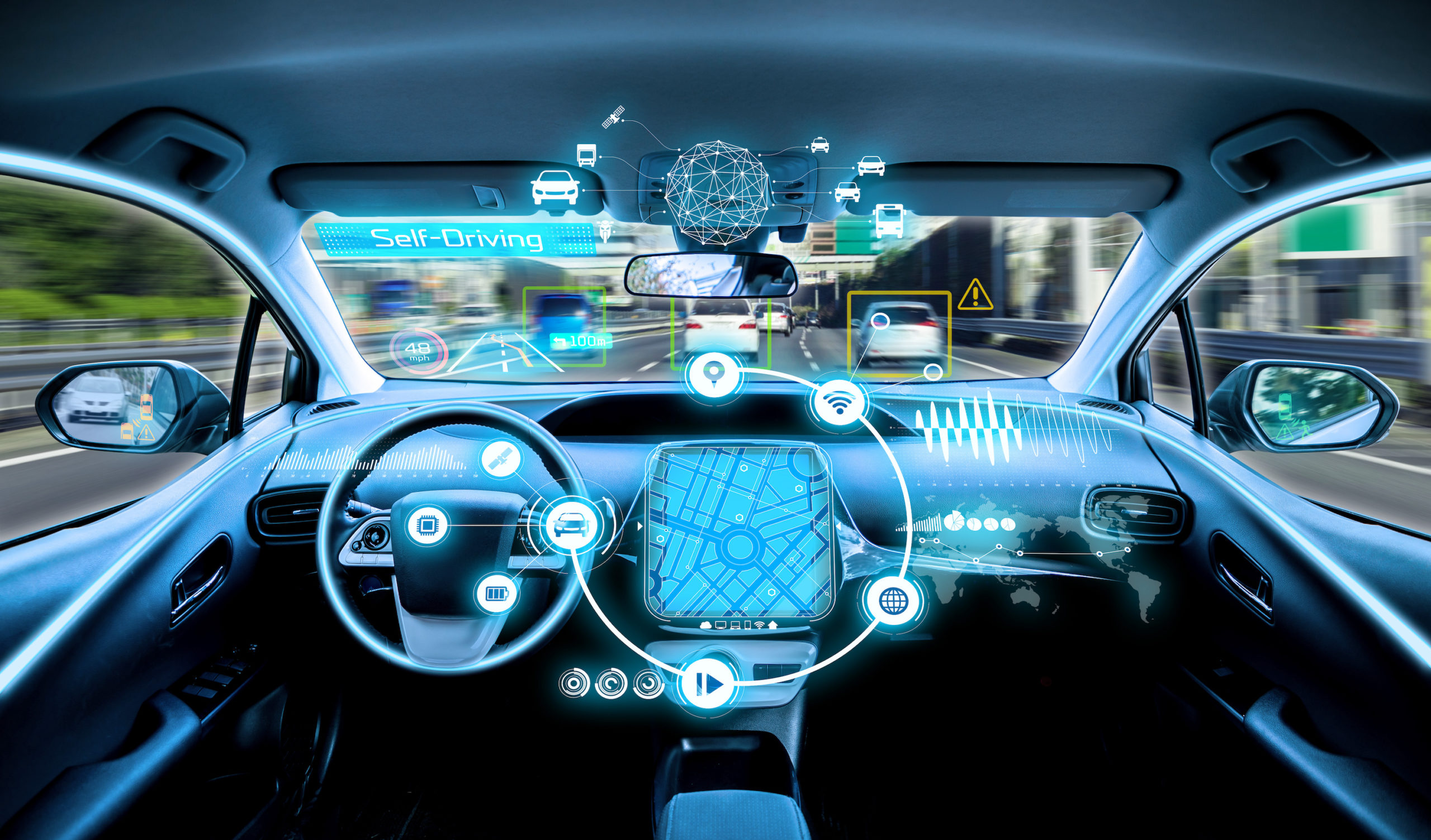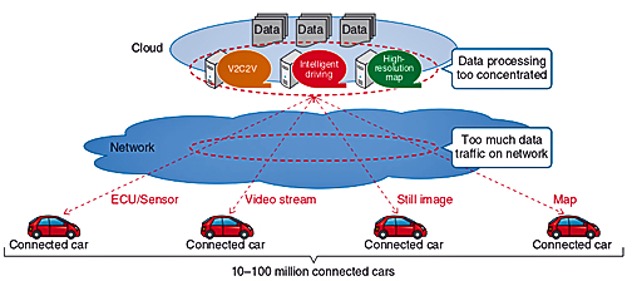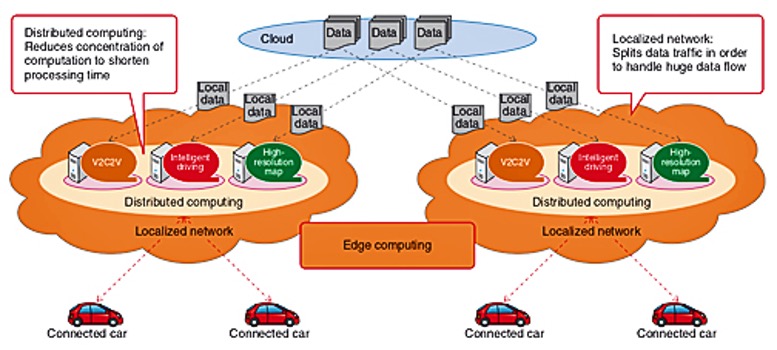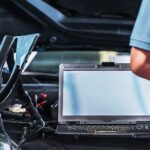Connected Car Technologies Require Reimagined Transportation Networks
The rise of connected car technologies will have enormous implications for the way people and goods travel. This mass exchange of data will create business efficiencies, safer travels, and faster deliveries. But persistent challenges remain before these technologies can be fully implemented.
Not so long ago, the only wireless links in a car were the radio, key fob, and radio-controlled garage-door operators. Today, a wide range of connected cars are integrating what is expected to become a beacon of radio transmissions that will provide access to real-time navigation, communication, and entertainment as well as autonomous travel management. The ultimate objective is to ensure safer transportation by reducing human intervention.

Connected cars that wirelessly exchange data with other entities and infrastructure in their environment are quickly becoming central in next-generation vehicle lineups. Connected fleet technologies take communications and the exchange of data to a more granular level, collecting information about driver activities, vehicle maintenance, route planning, safety, and other aspects of fleet management and sharing them with a central office. Connected vehicle functions may include:
- Infotainment
- Telematics
- Remote diagnostics / preventative maintenance / software updates
- Geofencing
- Collision avoidance
- Automated parking
- Assisted driving (ADAS)
- Parking space identification
- Full autonomous driving
- Car sharing services
- Car hailing
- Equipment monitoring / tracking
- Cloud access
- Real-time traffic conditions
- Real-time weather conditions
- Cellular communication
- Emergency services
- Access to networked home devices
- Map creation
- Mass transit timetables and scheduling
- Mode-specific applications
Known as V2X technologies (vehicle-to-everything), connected cars, trucks, trains, buses, motorcycles, and drones will use wireless links to communicate between a vehicle and other vehicles, pedestrians, traffic management infrastructure, cellular networks, the cloud, and other wireless devices.
To achieve these goals, these wireless communication systems require high-bandwidth, low latency, low power, high reliability links. At the moment, the lack of a universally accepted communication standard has posed a challenge to achieving the promise of the connected vehicle.
Wireless Communications Standards – IEEE802.11p and C-V2X
Two systems are currently competing for designation as this global wireless communications standard. IEEE802.11p (Dedicated Short-Range Communications – DSRC) is based on a variation of Wi-Fi protocol. It has proven to be a relatively long-range, exceptionally reliable system that is immune to weather conditions.
A more recent alternative is cellular based C-V2X, which offers reduced latency, improved data security, high reliability in dense areas, and longer range. C-V2X also offers the advantage of compatibility with 5G transmission. Both use the 5.9 GHz band. Additionally, short-range wireless Bluetooth will continue to be used to link devices inside and in close proximity to the vehicle.
The type of infrastructure necessary to support the expected exponential growth of real-time data generated by millions of cars and trucks is under debate. A network that links vehicles directly to the cloud could quickly become overwhelmed.
Adopting an edge-based network utilizing distributed sensors and real-time data processing capability with integrated machine learning and artificial intelligence could reduce traffic to the cloud as well as latency. The result is a more efficient use of resources that can safely support many more nodes.
Development of connected cars continues at a rapid pace, but there are multiple hurdles that must be addressed, including the availability of adequate radio spectrum, government regulatory approvals, standardization of transmission protocols, and most importantly, cyber security. The critical roles that connected vehicles will perform make the vulnerability to hacking unacceptable and could delay full implementation.
Bluetooth and Zigbee Wireless Communications Protocols
In addition to these long-range wireless protocols, low-power, short-range technologies, including Bluetooth and Zigbee, are finding in-cabin communication applications between mobile devices.
At some point, government regulators are expected to mandate the inclusion of V2V and V2I capabilities in every production vehicle. Data generated by a network of integrated intelligent sensors will enable safe navigation in a rapidly changing environment. The ultimate objective is to reduce the number of annual traffic deaths, injuries, and property damage.
Vehicle-to-infrastructure (V2I)
Vehicle-to-infrastructure (V2I) is an essential and challenging aspect of next-generation vehicles. Standardized transmission protocols could deliver real-time information on weather conditions, road hazards, and construction delays, while analyzing current conditions to maximize traffic flow. Designing, manufacturing, and installing the stationary infrastructure necessary to interact with data generated by traffic will take years. Our antiquated traffic management systems have seen little upgrade over the past 100 years, which represents a major opportunity for designers to implement systems utilizing ruggedized connectors and sensors. Vehicles, rail infrastructure, traffic control equipment, and the communications infrastructure needed to support multi-modal data exchanges must be able to perform reliably in outdoor environments that range from January in Alaska to July in Arizona.
There are at least two critical aspects of wireless communications for transportation applications – reliability and security. Demand for absolute reliability under all operating conditions is essential. Current cellular services, including 5G, are far from perfect. In April 2021, a software upgrade caused a recent failure of service for a Canadian cellular provider. Local weather conditions and obstructions from terrain or buildings can degrade quality of service. Hacking incidents impacting Solar Winds, Colonial Pipeline, and other businesses illustrate the requirement for cyber security. The many automated functions of current and future vehicles must be fully protected from malicious hacking, which could result in crashes and death. Demonstrated reliability and security will go a long way to building consumer confidence in future fully autonomous vehicles. Shielded copper cables and connectors as well as fiber optic links will be part of the solution.
Bringing this technology to the average passenger vehicle will require a variety of low-speed, high-speed, coaxial fiber optic, and power connectors, as well as sensors that have been designed to survive extreme temperatures, shock, vibration, corrosive liquids, salt spray, and rough handling by assembly and repair personnel.
All of these changes are coming at a critical time in the transportation industry, when cars, trucks, and delivery fleet vehicles may be evolving to an automated transportation model. Users will hail an autonomous vehicle on a subscription basis rather than purchase, maintain, and garage one or more personal cars. Unmanned fleet vehicles will take over long-haul routes as well as last-mile deliveries. Concern about the environmental impact of millions of vehicles, many of which are parked up to 90% of the time, is a factor. Americans have always been in love with their cars which has come to represent social status as well as freedom of movement, and countries like China are just beginning to adopt that mentality, so it may take several generations for consumers to fully adopt this new model. But the business opportunities, including the expansion of the cloud and edge, that will be required to support millions of connected vehicles will bode well for the engineers, electronic connector suppliers, and OEMs that will be involved in this massive re-envisioning of our transportation networks.
Like this article? Check out our other Connected Vehicles, New Technology, and High Reliability articles, our Sensors-Antennas and Automotive Market Pages, and our 2021 and 2020 Article Archives.
- Optics Outpace Copper at OFC 2024 - April 16, 2024
- Digital Lighting Enhances your Theatrical Experience - March 5, 2024
- DesignCon 2024 in Review - February 13, 2024







